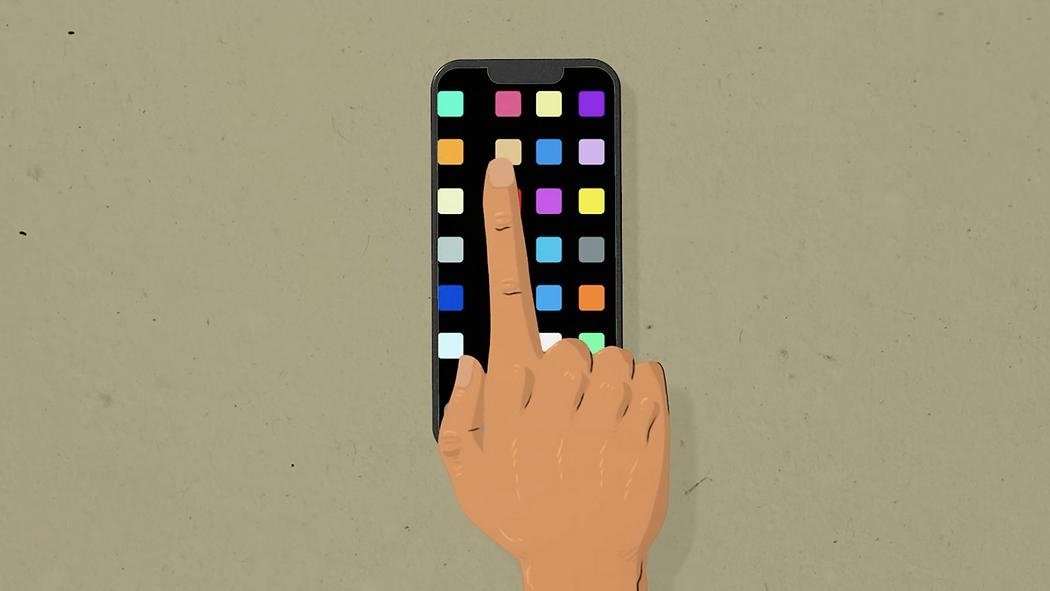In 2010, South Korea experienced a particularly severe winter. People couldn't use their cell phones while wearing gloves, so they started using sausages, resulting in one company seeing a 40% increase in sausage sales.

What can sausages do that gloves can't? In other words, how do touchscreens work?
Charles Wallace and Sajan Saini break down the science behind touchscreens.
Transcript
In 2010, South Korea experienced a particularly severe winter. People couldn't use their cell phones with gloves on, so they started using sausages, resulting in one company seeing a 40% increase in sausage sales. So what could sausages do as opposed to gloves? In other words, how do touchscreens actually work?
In 1965, the first one was invented screen touch, to help British air traffic controllers with flight plans. However, this technology was cumbersome and expensive for widespread use. Over the next few decades, engineers further developed this technology and experimented with alternative kinds of touch screens. Soon, resistive touch screens flooded the market. But then, in 2007 Apple released the first iPhone. It was quite innovative but, again, it used the same principle as the first touch screen: that of capacitance. Now, capacitive and resistive touch screens are the two most common types.
They use an external power supply for the electrical circuit. In conductive materials, electrons flow around the atoms, producing an electric current. Unlike insulators, electrons in conductors are weakly bound and flow easily.
A resistive screen has two layers. The top is a clear, flexible material, usually plastic, while the bottom is something rigid, like glass. The two layers are covered with a conductive substance, and are separated by a thin gap. With the proper pressure, the layers are connected, completing the electrical circuit. This causes a change in voltage to which the software reacts. Resistive screens may not always respond, but they are generally cheap and durable, so they are intended for bioengineering and general use. The majority of touchscreens produced in 2007 were resistive. But in the years since the iPhone came out, they've basically become capacitive.
Models vary, but today's cell phone screens consist of a protective and insulating glass on the outside and an LCD screen underneath that produces the images you see. Between the glass casing and the LCD screen are several layers. One is surrounded by rows of a transparent, conductive material carrying an alternating electrical circuit. A thin insulating layer separates these conductive lines from others, which are arranged in columns. With one on top of the other, the lines form a grid. The points όπου διασταυρώνονται ονομάζονται κόμβοι. Η battery of mobile attracts the electrons in the first layer of lines, and some electrons gather at each node, creating a small electric field. These screens are called capacitive touch screens, because the nodes behave as capacitors by storing charge.
They are generally easier to use than resistive screens because they interact directly with the finger without the need for pressure. Your body is a good conductor and is constantly transmitting electrical circuits. Why; Because you are almost 60% water. While chemically pure water is considered an insulator, most is adulterated. The water inside you is charged with ions, atoms or molecules that have a weak electrical charge. So when you select an app, the finger acts as a third line. It interacts with the existing electric field causing a weak electrical circuit to circulate through your finger and eventually back to the phone. This changes the amount of load on the affected nodes. And the voltage readings on the second layer of lines tell the microprocessor which part of the screen is being touched.
However, if you use the mobile phone with wet hands or with gloves, you will probably have a hard time. Both prevent electrical contact between the finger and the cell phone. If water falls on the screen, it can trigger multiple nodes and the mobile will behave as if it is being touched in multiple places at once. On the other hand, gloves are insulators, so the charge can't go anywhere. Meanwhile, objects that conduct electricity as well as a finger, such as banana peels and certain processed meats, can activate the screen, a knowledge that can come in handy when you need it.





